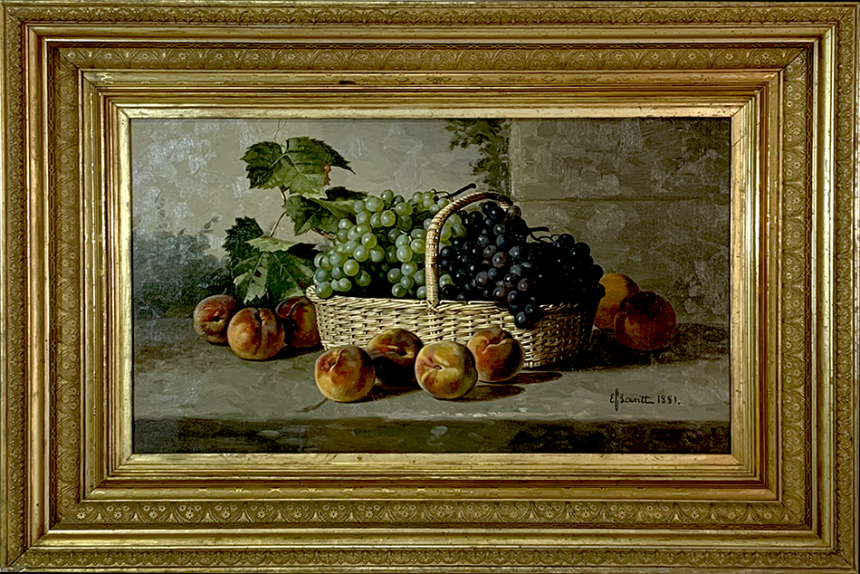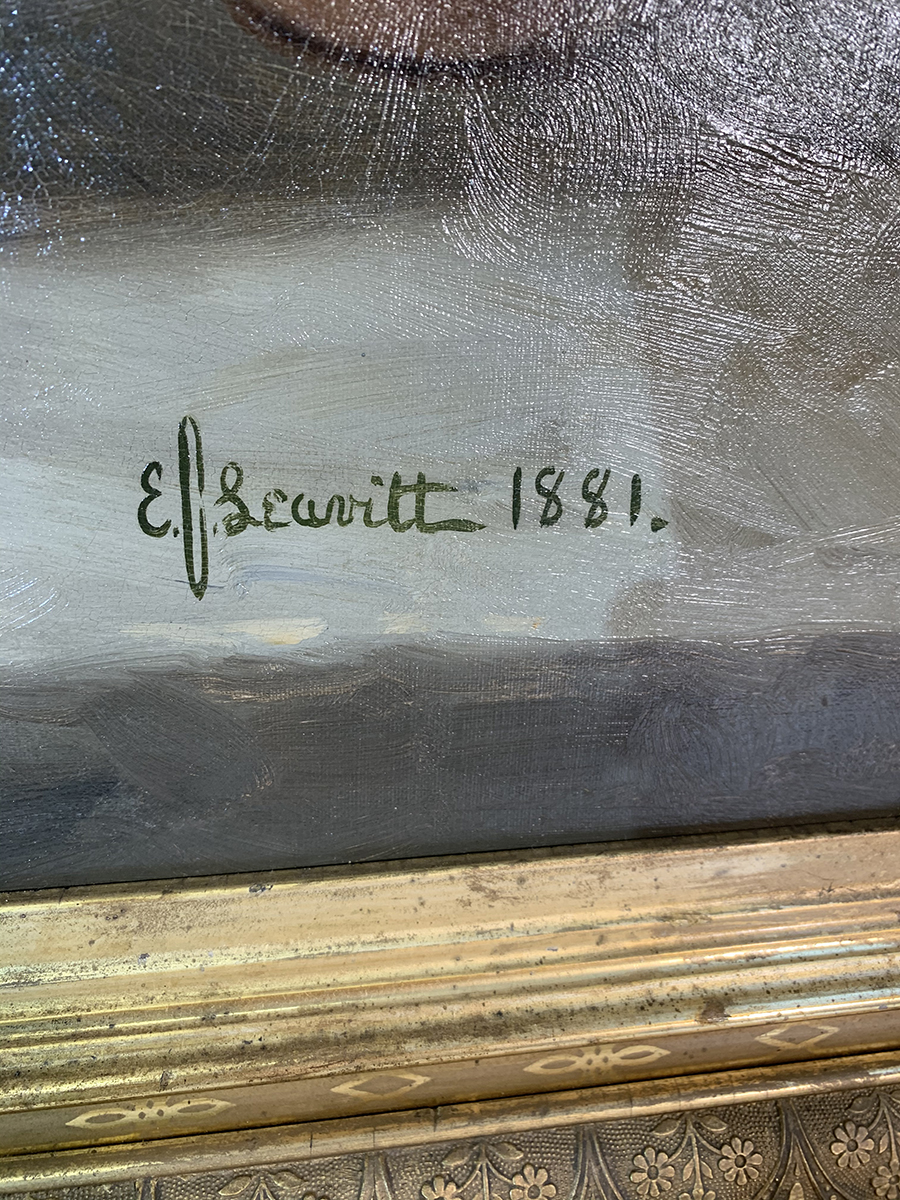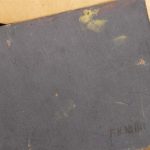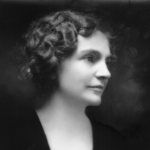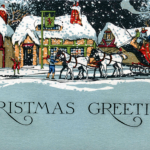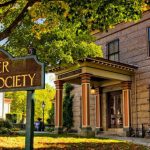I had been hoping to acquire a painting by Edward Chalmers Leavitt (1842-1904) for the FRHS collection for some time, and when alerted by a long-time FRHS member and benefactor, just a few weeks past, about a piece that was being offered by a Rhode Island auction house, I immediately inquired. A text with photographs arrived shortly thereafter.
I was not overly impressed.
It was a still life painting of two muskmelons and a group a plums, with one split open to reveal the pit – usually called “the stone” in the 19th century – and the juicy flesh of the perfectly ripened fruit. It was very nicely painted – the light reflecting off the plum juice was particularly well handled, but the palette was dark and muddy, the arrangement hampered by the dusky earth on which it rested. Nor was it an interesting combination of fruit.
Nice enough, to be sure, but not what I was hoping for. Not by a long shot.
But a conversation with the auctioneer revealed that another example by Leavitt was to hit the auction block the next week; “a very nice one,” he said.
So I contacted the long-time FRHS member and benefactor, said that the painting would not broaden the scope of the FRHS collection, and mentioned that another example was upcoming.
The reply:
“Well then, we will have to look at it.”
Early the next week, I received photographs.
The auctioneer did not disappoint.
Oh, yes. This was more like it.
Off I went to Rhode Island to examine the other painting by Leavitt.
In this case, I was overly impressed.
Very much so.
And fortunately, so was the benefactor willing to make the acquisition possible.
The painting:
Still Life with Grapes and Peaches on a Stone Ledge.
My title, not the artist’s – we do not know what it may have originally been called.
At least not yet.
Perhaps, someday …
Edward Chalmers Leavitt was born in Providence, Rhode Island; his father was a minister, his mother, a minister’s daughter. A New England blue-blood of the first order, he was a direct descendant of John and Priscilla Alden.
He was educated at private schools in his native city, and at the venerable Kimball Union Academy in Meriden, New Hampshire, after which he returned to Providence. With the outbreak of the Civil War he enlisted; according to his obituary, “he served in both branches of the Union service.”
His artistic studies were pursued under the tutelage of James Morgan Lewin (1836-1877), a native of Swansea, Massachusetts, and one of the original members of the group of young, talented, and highly-driven Providence artists known as the “Group of 1855.” Lewin specialized in landscape painting – he did notable work in New Hampshire’s White Mountains – but, like many artists of the period, he also produced the occasional still life.
It appears that Leavitt, prior to his studies with Lewin, was largely self-taught.
Leavitt first exhibited at the National Academy of Design in New York City in 1875 and “speedily came into the front rank of New England painters.” He exhibited at Pennsylvania Academy of Fine Arts, and at both the Providence and Boston Art Clubs, in which organizations he also maintained membership; he also exhibited in Fall River. The artist specialized in still life paintings of fruit, flowers, or combinations thereof, and occasionally produced pictures of fish or game.
Associated both regionally and stylistically with the Fall River School, Leavitt emerged as Providence’s counterpart to Robert Spear Dunning (1829-1905) – who also maintained a Providence studio – and he achieved recognition as the leading still life painter working in Rhode Island’s capital city.
There is, however, a distinct difference in the work of the two artists. Dunning’s painting is extremely precise and photographic, and his compositions usually include only a few choice objects – fine tableware, linen, or serving pieces of elaborate silver – containing, or accompanying, the arrangements of fruit and flowers.
Leavitt’s painting, in comparison, though very sharp and with great attention to detail, is less precise. His paintings are often more elaborate than Dunning’s, with a plethora of tableware and objet d’art of all sorts arranged amidst the fruit and flowers. Both artists habitually set their compositions on highly-polished table tops with elaborate carved edge.
The two men were highly adept – indeed, brilliant – craftsmen, but Dunning, undoubtedly, was the master.
Leavitt’s fellow Providence artist, Charles Walter Stetson (1858-1911) – whose work is of particular interest to me, and whose journal of paintings I have spent years transcribing – thought very little of the Fall River School painters and even less of Leavitt. This was made abundantly clear in an 1881 entry in his personal diary: “Artists, they are not artists. Leavitt himself said to me, ‘After all, Mr. Stetson, say what we may, we are only dry goods merchants in another line.’”
Sadly, in Leavitt’s case, this criticism eventually proved somewhat true.
Stetson’s barb hit its mark.
Leavitt was an extremely prolific artist, and it is thought that he produced well over one thousand paintings during his lifetime. As his regional popularity soared, and his purse grew heavier, his work sometimes suffered; it became insipid and predictable.
Which, it appears, was exactly what his patrons – including many in the city of Fall River – desired and were willing to pay for.
Stetson’s criticism of Leavitt’s work was not, however, universal. The well-known Providence portraitist, John Nelson Arnold (1834-1909) – a close friend of Robert S. Dunning – lauded Leavitt’s artistic abilities, and stated that his work very closely resembled that of the great European masters. Indeed, Leavitt earned a well-respected position in regional artistic circles and many young aspiring artists sought tutelage in his studio.
His best work was undoubtedly produced in the late 1870s and 1880s, but the occasional spark was still ignited, and some of his later works are spectacular.
A contemporaneous description of the man:
“Mr. Leavitt [has] a large acquaintance and [is very] well liked … a large and a noticeable-appearing man and … distinguished in his attire. For some time past he [has] been acting in a somewhat eccentric manner.”
Interesting: “… acting in a somewhat eccentric manner.”
I suspect there are some fascinating tales there.
I am particularly fond of eccentric artist stories, having known a few eccentrics – artists or not – myself.
Further research is in order.
And so, the week before last, the eagerly anticipated auction day arrived; I did not physically attend the sale – social distancing – but arranged telephone bidding.
I am always somewhat anxious, waiting for the telephones to ring during an auction: What if the call does not come through?
It did.
In a few minutes, and thanks to the generosity of the long-time FRHS member and benefactor, the museum was successful and won the painting.
I was very pleased.
The next day, I picked up the painting, wrapped it safely in the worn, once-very-nice Alpaca blanket I keep in my trunk for such things, and brought it “home” to the FRHS.
But there was one stop on the way: I wanted the long-time FRHS member and benefactor to be among the first to see it. Having made the acquisition possible, it was only fitting.
The benefactor:
“You did well.”
“No,” said I:
“You did well.”
Still Life with Grapes and Peaches on a Stone Ledge is a stellar example of Leavitt’s work, painted in oil on a 30” x 18” canvas during the artist’s best period, and dated 1881. The frame, though of the period and ideally suitable, is not the original.
The painting depicts a woven grape basket, filled to abundance with beautifully rendered green and purple grapes, surrounded by nine peaches; the fruit is freshly-picked, evidenced by the grape leaves and meandering tendrils, still attached to the vine and not yet limp or withered. The vines add a naturalistic complexity to the arrangement, and the stone ledge and wall, with hints of verdant landscape in the background, offer a decidedly European atmosphere.
The effect of light and shadow as it plays on shape and color – evident in the interlaced basket weave, and verdant leaf, the patchy bloom of grape on delicate, glossy skin, or the velvet on peach – are strikingly rendered and visually compelling.
To look at it – to absorb it – causes one’s mouth to water.
It is luscious.
Are we in Italy, or Germany, or France … or in a Providence, Rhode Island, studio?
Atypical of Leavitt’s work, it is pure and uncomplicated in its conception, devoid of the clutter that characterizes his oeuvre, evident in the vast majority of his still life paintings.
But wait … my description ends here.
I am saving anything further for an upcoming video presentation.
The question:
Is Still Life with Grapes and Peaches on a Stone Ledge a masterpiece by Leavitt?
I should say so.
Yes. Very much so.
And the FRHS is indebted to the Anonymous Charitable Trust that made its acquisition possible.

